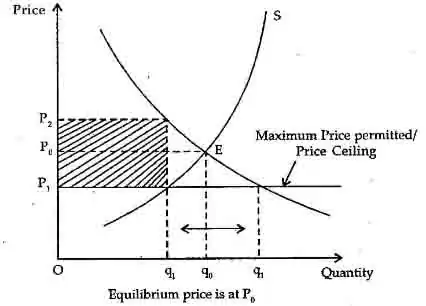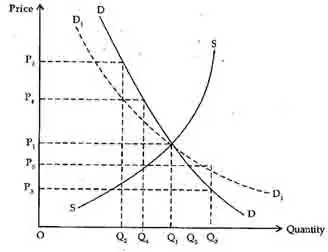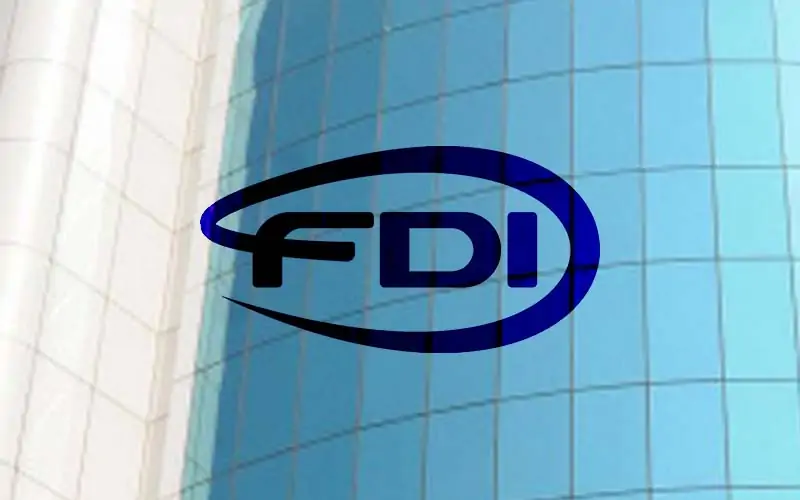What do you understand by price control?
Government intervention can alter market outcomes in the following two ways, whereby it can influence the price at which commodities are bought and sold—
- It can change the equilibrium price by altering the demand on supply.
- It can use the law and enact legislation that regulates the price.
This is also called Price Control. This simply means that prices are influenced or controlled by laws, rather than by market forces.

One such form of price control is maximum price legislation. This is often known as price ceilings in which the government sets maximum permissible prices that the producers may legally charge. If the ceiling is set above the equilibrium price, then it has no effect, since the equilibrium remains attainable. If however, the ceiling is set below the equilibrium price, it determines the price in which case the ceiling is said to be binding. This results in excess demand black-market pricing as is shown in the above diagram.
If a price ceiling is set at P1, the quantity demanded will rise to q1 quantity supplied will fall to q2. Quantity actually exchange will be q2.
Excess demand is q1 — q2 This would result in black marketing. B marketeers would buy q2 at the controlled price of P1 and sell at the price P2, earning the profits shown by the shaded areas in the above diagram.
Agricultural Stabilization Program: Since agricultural production is subjected to the vagaries of nature, there have been significant fluctuations in the crop production during the year which in turn lead to wide fluctuations in the prices and incomes of the farmers.
These effects are more pronounced because farm products often have inelastic demands. Therefore, the government intervenes in agricultural markets to reduce price fluctuations and stabilize producers income. This is called Agricultural Stabilization Program by appropriate government intervention. This may be shown with the help of the following diagram:

Here, DD is the demand curve, SS is the planned supply curve, OP1 is the equilibrium price and OQ1 is the equilibrium output. However, actual production fluctuates between Q2 and Q3 because of variations in weather. These fluctuations cause the free-market price to fluctuate between
P2 and P3, To stabilize income, any given output must be sold at a price which is determined by drawing a D1D1 curve of unit elasticity (η = 1).
This curve is a rectangular hyperbola which has a property that area under this curve is constant for all combinations of P and Q. So that it gives equal income (P x Q) at all points. When production is q3(say due to number harvest), then the market price must be held at P5(determined from D1D1 with η = 1) if income is to be unchanged. But at market price P5, the public desire to buy only Q5 and the government must buy up the remaining production, Q3— Q5 and add it to its stocks. Farmers income will be P5 X Q3 (given by the rectangular hyperbola demand curve D1D1) which is equal to P1 x Q1.
When production = Q2, price must be allowed to rise to P4. But at prick P4, the public desires to buy Q4, so the government must sell Q4— Q2 out of its stock. The farmers incomes again stabilized as the area P4Q2 = the area P1Q1. Hence appropriate government intervention in agricultural markets can reduce price fluctuations and stabilize producers revenue.




